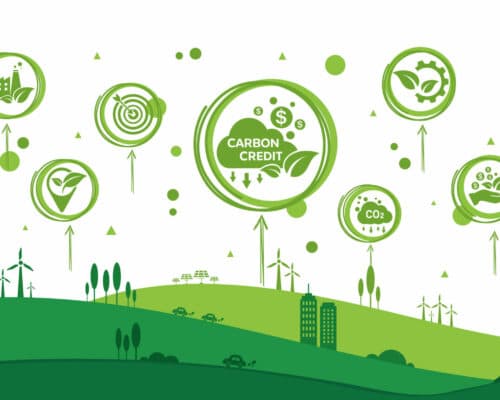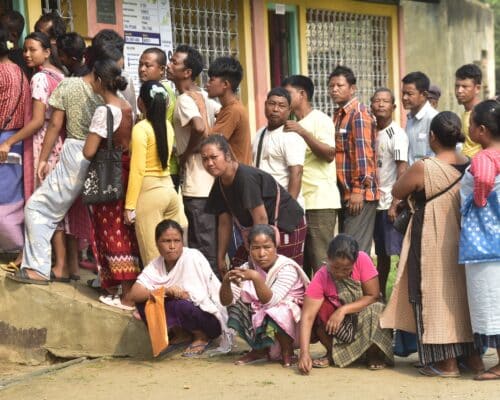Articles
What are Scope 1, 2 and 3 Emissions and Their Role in Fighting Climate Change
Scope 1, 2 and 3 categorise a company's direct and indirect greenhouse gas emissions. Reducing all three is essential for corporate responsibility and meeting net zero.
EV Growth Gains Momentum in Southeast Asia
Electric vehicle (EV) sales growth in Southeast Asia is gaining momentum. However, hurdles still need to be overcome, including using fossil fuel-based power generation to charge EVs, a lack of infrastructure and investment and insufficient government incentives.

G7 Ministers’ Meeting 2023: What Is the Desired Outcome?
The G7 Climate and Energy Ministerial Meeting is shaping up to be a roadshow for Japan's questionable technologies. If the world is to stand a chance in limiting climate change to 1.5°C, the G7 reject the proposals, speed up coal phase-out and limit gas investments.
Malaysia’s Energy Transition: Challenges and Opportunities
Malaysia has great potential for clean energy alternatives like solar and hydropower. On paper, its energy transition is already mapped out. The question is whether it will follow this path or lock itself into a future of fossil fuel energy dependence.
Does Japan Care About the Environment
Japan's role as this year's president of the G7 is pushing its subpar environmental performance into the spotlight. Inadequate emissions reduction goals, a high rate of fossil fuel imports and questionable fishing practices highlight this. These concerns will only grow more dire for the climate-vulnerable country and must be addressed.
Cost and Viability Plague Carbon Capture and Storage in the Power Sector
Carbon capture and storage (CCS) is being pushed as a decarbonisation pathway for the power sector. However, all commercial-scale CCS projects paired with thermal power plants have underperformed, and costs are prohibitively high. Alternatively, wind and solar are both proven, cost-efficient technologies. Investors and decision-makers need to refocus their efforts on transitioning away from fossil fuels.
Energy Poverty: Causes, Effects and Solutions
Energy poverty describes a lack of access to affordable, reliable, sustainable and modern energy sources. This can block progress towards human well-being and sustainable development.
Wind Energy in Vietnam – Opportunities and Potential
Vietnam has already established itself as one of the world's most notable clean energy success stories. However, to retain that crown, the country needs to incentivise foreign financiers.
Japan-Vietnam Energy Relations: Opportunities and Risks
Vietnam needs a partner that will prioritise its decarbonisation and access to affordable and ready-to-be deployed solutions to make the most of its clean energy potential. It doesn't need to be pushed towards distracting technologies with questionable decarbonisation credentials. The approach that Japan will take in its cooperation remains to be seen.
On a Quest to Make Music Streaming Greener, Kpop Fan Activists Gets One Major Company to Change Its Tune
Kpop4Planet, a fan-driven, grassroots climate group, targeted South Korea’s music streaming giants during their “Streaming, Heating, Melting” campaign to demand that companies move towards renewable energy sources.
Japan’s Sustainability Programs Are Lacking Compared to G7
Japan is hosting the G7 summit in 2023, which will include discussions on decarbonisation and renewable energy development. However, Japan's sustainability efforts are considered some of the poorest of the G7 nations. The country's financing of fossil fuel projects throughout Asia, its reliance on coal and its questionable strategy towards decarbonisation are all concerns. As the host, Japan should promote sustainability efforts.
Oil Spill in the Philippines Implicates San Miguel Corporation
A major oil spill in the Philippines raises concerns over a corporate giant’s refusal to accept responsibility for the disaster. It also raises concerns over its dismal environmental record due to liquefied natural gas (LNG) development. The government is waffling, and the environment, local residents and fisherfolk are suffering.
Major LNG Liquefaction Projects 2023-2027
Global LNG capacity is set to increase by 35% by 2027, ushering in a new round of carbon emissions-intensive LNG projects. However, the world needs fewer fossil fuel project developments, not more, to reach net-zero by 2050.
SK E&S, K-Sure and Kexim Face Rising and Unquantified Risks With Their Backing of the Barossa Gas Project Off Northern Australia
The Export-Import Bank of Korea (Kexim) and the Korea Trade Insurance Corp (K-Sure) are risking Korean public money by financing SK E&S’ investment in the Barossa gas project off the coast of Northern Australia. The Korean government agencies funding and insuring the Barossa gas project face significant and mounting risks on two fronts – native title and climate-related risks.
Most Popular
Most Popular
Categories
-
9
-
31
-
128
-
4
-
17
-
39
-
51
-
14
-
10
-
15
-
23
-
6
-
156
-
162
-
23
-
1
-
1
-
22
-
30
-
36
-
66
-
14
-
74
-
40
-
17
-
6
-
28
-
21
-
85
-
246
-
20
-
35
-
31
-
9
-
41
-
35



